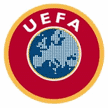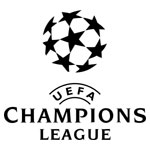|

| ||
|
| |||
|
| |||
|
| |||
This page was the main page of the 2016/2017 season. All text has to be interpreted within that context. No changes are applied. On this site you will find everything about the calculation of coefficients and rankings used for the qualification and seeding of teams for the Champions League and the Europa League.
The following general information is available: database with all results and rankings, detailed description of the method of calculation, graphs of ranking data, news for a selection of published articles, links to other football sites, forum for discussions on European Cup football, search for match results, history with formats in previous years, and an overview with all clubs participating in European Cups since 1955.
See below for a general description of the format of the Champions League and the Europa League.

Champions League
The Champions League has 32 teams in the group stage, and is preceded
by four qualifying stages. The last qualifying round is also called the
play-off round. The champions of all countries enter the Champions
League, but high ranked countries can send up to 5 teams. Some teams of
high ranked countries are directly qualified for the group stage, while
others have to play qualifying rounds.
See
wikipedia
for more general info.
| CHAMPIONS LEAGUE | ||
|---|---|---|
| 1st Qualifying Round | July | 10 champions from countries ranked 46 or lower |
| 2nd Qualifying Round | July |
involving 34 teams: 5 winners from 1st qualifying round 29 champions from countries ranked 16-45 |
| 3rd Qualifying Round | Jul-Aug |
involving 30 teams split in two sections: Champions section with 20 teams 17 winners from 2nd qualifying round 3 champions from countries ranked 13-15 Non-Champions section with 10 teams 9 second-placed teams from countries ranked 7-15 1 third-placed team from country ranked 6 |
|
4th Qualifying Round (play-off round) |
August |
involving 20 teams split in two sections: Champions section with 10 teams 10 winners from 3rd qualifying round Non-Champions section with 10 teams 5 winners from 3rd qualifying round 2 third-placed teams from countries ranked 4-5 3 fourth-placed teams from countries ranked 1-3 |
| Group Stage | Sep-Dec |
involving 8 groups of 4 teams each: 10 winners from 4th qualifying round 12 champions from countries ranked 1-12 6 second-placed teams from countries ranked 1-6 3 third-placed teams from countries ranked 1-3 1 Champions League cup holder or Europa League cup holder |
| Round 2 | Feb/Mar |
involving 16 teams: 8 group winners from the group stage 8 group runners-up from the group stage |
| Final stage | Mar-May |
involving 8 teams: 8 winners of the second round play the quarter finals, the semi finals, and the final |
 Losing teams of the 3rd qualifying round enter the 4th qualifying
round of the Europa League,
while losing teams of the 4th qualifying round enter the group stage
of the Europa League,
and third-placed teams from the group stage
enter the round of 32 in the Europa League.
Losing teams of the 3rd qualifying round enter the 4th qualifying
round of the Europa League,
while losing teams of the 4th qualifying round enter the group stage
of the Europa League,
and third-placed teams from the group stage
enter the round of 32 in the Europa League.
The title-holder always qualifies directly for the group stage of the Champions League. If the title holder already qualified for European football the total number of teams of that association does not change. The maximum number of teams of one association in the group stage of the Champions League is five. If more teams qualify the last-placed team for the Champions League of that association has to take part in the Europa League.
If the CL title holder already qualified for the group stage of the Champions League by the domestic league, then the Europa League title holder qualifies directly for the group stage. Otherwise the Europa League title holder starts in the play-off round for Non-Champions. If both the CL cup holder and the EL cup holder qualified for the group stage by their domestic league, then the champion of the 13th country on the country ranking list will gain direct access to the group stage, the champion of the 16th country on the country ranking list will gain direct access to the 3rd qualifying round, and the champions of the 47th and 48th country on the country ranking list will gain direct access to the 2nd qualifying round. Similar changes (with priority to champions) are made if the cup holder already qualified for one of the qualification rounds.
If in the group stage of the Champions League two or more teams finish equal on points after all the group matches have been played, the following criteria are applied to determine the group rankings:
- Higher number of points obtained in the matches between the teams in question
- Superior goal difference from the matches between the teams in question
- Higher number of goals scored in the matches between the teams in question
- Higher number of goals scored away from home in the matches between the teams in question
- If teams still have an equal ranking, the above criteria 1-4 are reapplied exclusively to the matches between the teams in question to determine the final ranking. If this procedure does not lead to a decision, the criteria 6-12 below apply
- Superior goal difference in all group matches
- Higher number of goals scored in all group matches
- Higher number of away goals scored in all group matches
- Higher number of wins in all group matches
- Higher number of away wins in all group matches
- Lower disciplinary points from cards in all group matches (red=3, yellow=1)
- Higher club coefficient
See the Regulations of the UEFA Champions League 2016/2017 (pdf file at uefa.com) for a complete and formal description of all regulations.

Europa League
The Europa League is a competition for the cup winners and a number of
high-placed teams of the domestic league in each country. The number of
teams is depending on the country ranking. Fair Play teams no longer qualify for the Europa League. See wikipedia for more general info.
| EUROPA LEAGUE | ||
|---|---|---|
| 1st Qualifying Round | July |
involving 100 teams: 30 cup winners from countries ranked 26-55 35 second-placed teams from countries ranked 18-53 35 third-placed teams from countries ranked 16-51 |
| 2nd Qualifying Round | July |
involving 66 teams: 50 winners from 1st qualifying round 8 cup winners from countries ranked 18-25 2 second-placed teams from countries ranked 16-17 6 fourth-placed teams from countries ranked 10-15 |
| 3th Qualifying Round | Jul/Aug |
involving 58 teams: 33 winners from 2nd qualifying round 5 cup winners from countries ranked 13-17 9 third-placed teams from countries ranked 7-15 5 fourth-placed teams from countries ranked 5-9 3 fifth-placed teams from countries ranked 4-6 3 sixth-placed teams from countries ranked 1-3 |
| 4th Qualifying Round | August |
involving 44 teams: 29 winners from the 3th qualifying round 15 teams eliminated in the 3rd qualifying round of the Champions League |
| Group stage | Sep-Dec |
involving 12 groups of 4 teams each: 22 winners of the 4th qualifying round 10 teams eliminated in the 4th qualifying round of the Champions League 12 cup winners from countries ranked 1-12 1 fourth-placed teams from country ranked 4 3 fifth-placed teams from countries ranked 1-3 |
| Round 2 | February |
involving 32 teams: 12 group winners from the group stage 12 group runners-up from the group stage 8 third-placed teams from the group stage of the Champions League |
| Round 3 | March |
involving 16 teams: 16 winners of the second round |
| Final stage | April-May |
involving 8 teams: 8 winners of the second round play the quarter finals, the semi finals, and the final |
 If the cup winner of a country qualifies for the Champions League,
then an additional team based on league position will be qualified.
In some countries (England and France) the last league entrant
position is given to the League Cup Winner.
If the cup winner of a country qualifies for the Champions League,
then an additional team based on league position will be qualified.
In some countries (England and France) the last league entrant
position is given to the League Cup Winner.
Depending on the use of the title holder spots in the Champions League the access list for the Europa League might need to be adapted. If so then priority is given to cup winners.
If two or more teams are equal on points on completion of all the group matches, the same criteria as for the Champions League apply (see above).
See the Regulations of the Europa League 2016/2017 (pdf file at uefa.com) for a complete and formal description of all regulations.
